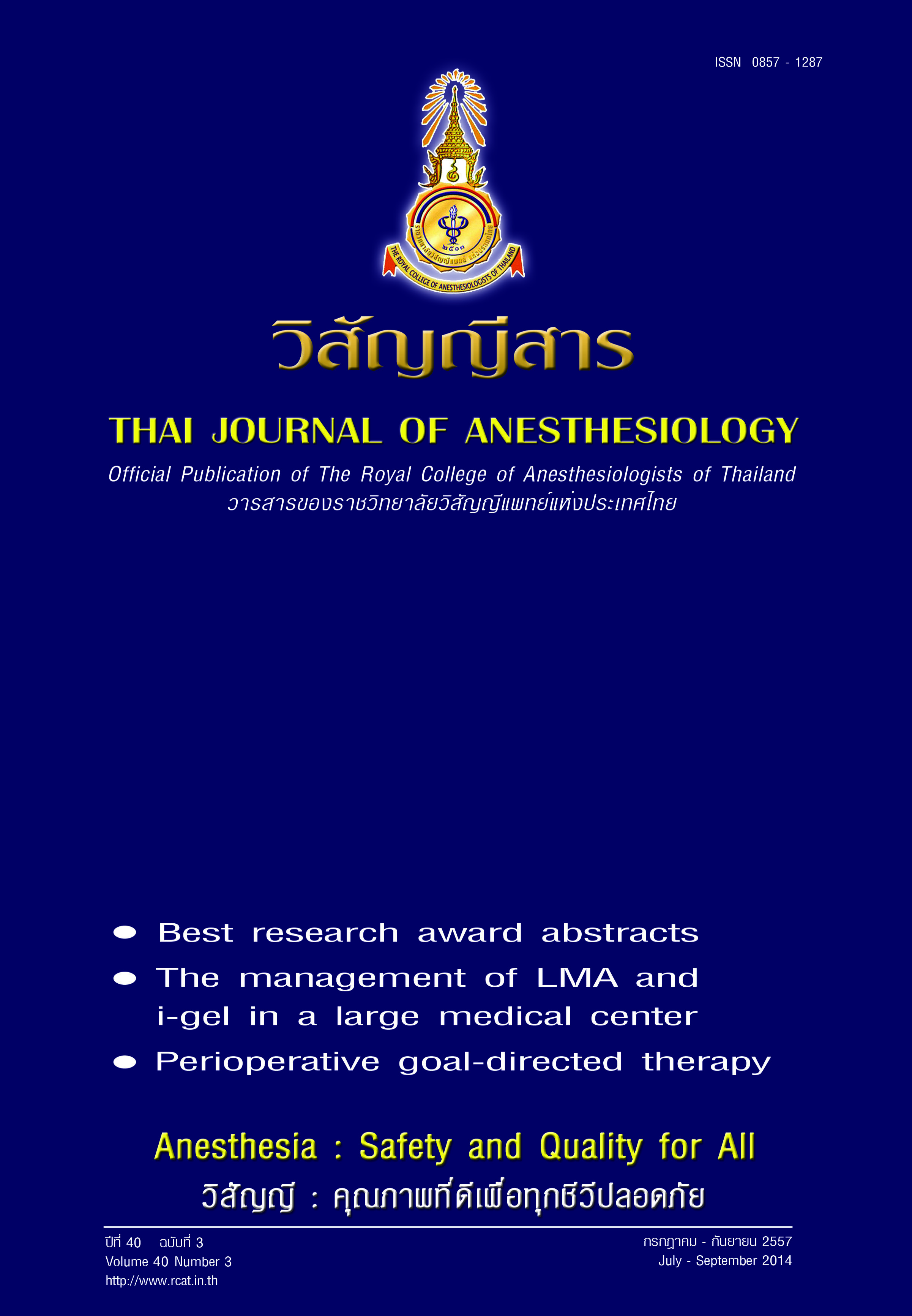Effect of Fluid Flow Rate on the Warming Efficacy of Fluid Warmer
Main Article Content
Abstract
Background: In patients who needed intraoperative massive transfusion, cold fluid/blood transfusion can cause hypothermia and leading to other consequence complications. One of warming methods to prevent hypothermia in these patients is warming intravenous fluid before infusion. Aim of this study was to assess the effect of fluid flow rate on the warming efficacy of fluid warmer.
Methods: The room air temperature was controlled at 24°C. Normal saline at the room air temperature was used for experimentation. The fluid connected with infusion pump and cover with the heater line which constantly set point at 42°C. The temperature of fluid after warming was measured by insulated thermistor on the difference fluid flow rates; 100, 300, 600, 900, and 1,200 mL/h in compared with the temperature of fluid prior warming. The effective warming was defined as the outlet fluid > 32°C.
Results: The room temperature was 23.6 ± 0.9°C. The temperature of fluid prior warming was 24.95 ± 0.5°C. There were significantly increased on outlet temperatures after warming in all difference flow rates (P –value < 0.001). The increased temperature were 10.9 ± 0.1°C, 11.5 ± 0.1°C, 10.2 ± 0.1°C, 10.1 ± 0.7°C and 8.4 ± 0.2°C according to flow rate of 100, 300, 600, 900, and 1,200 mL/h. The changes in temperature among all different flow rates were significantly difference (P - value < 0.001). At all flow rates, the outlet temperatures are above 32°C.
Conclusions: These results suggested that the efficacy of warming was inversely correlated with the increasing of flow rate. In overall flow rates, the outlet temperature cannot reach to 42°C as the set point, but higher than 32°C which benefit to infusion over than the room temperature fluid for maintaining the core temperature in patient.


